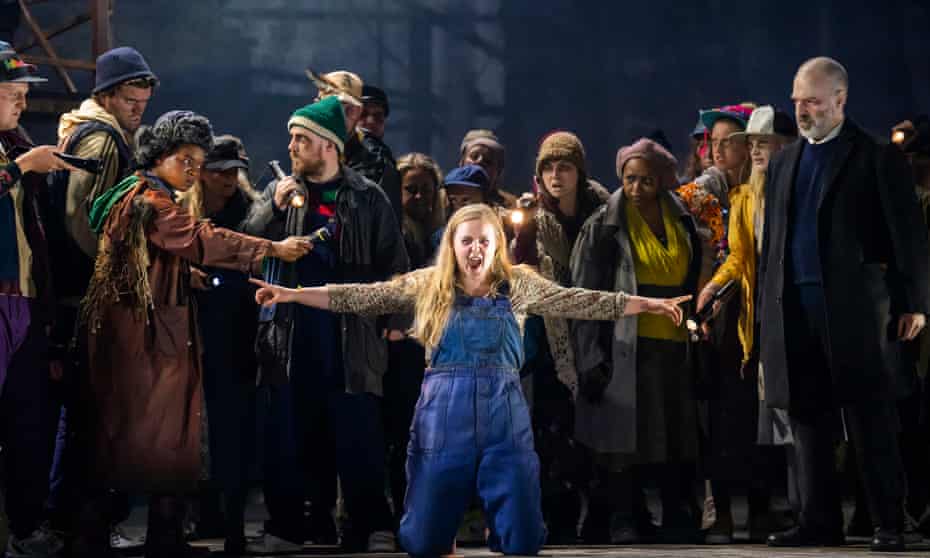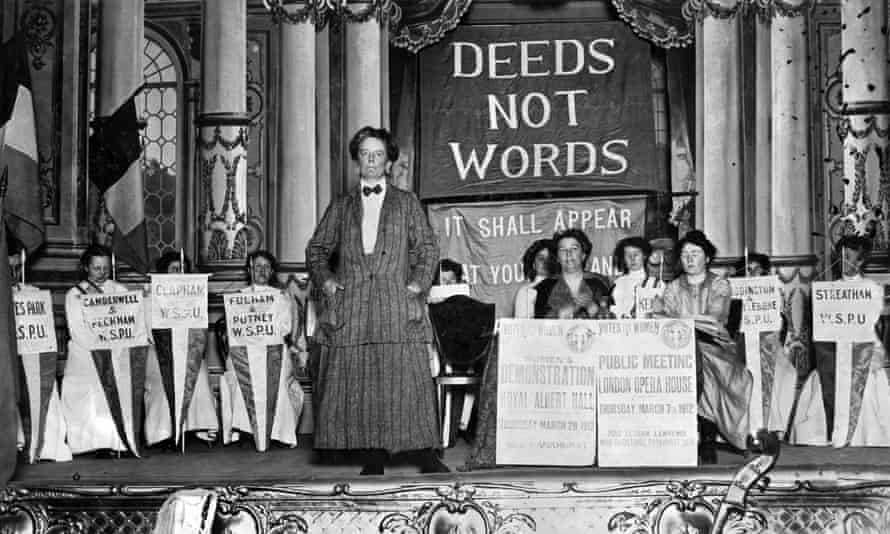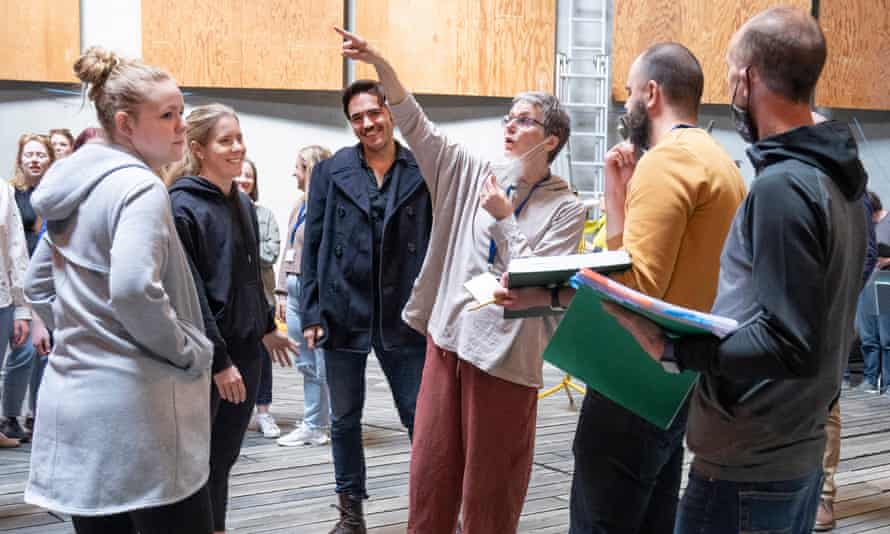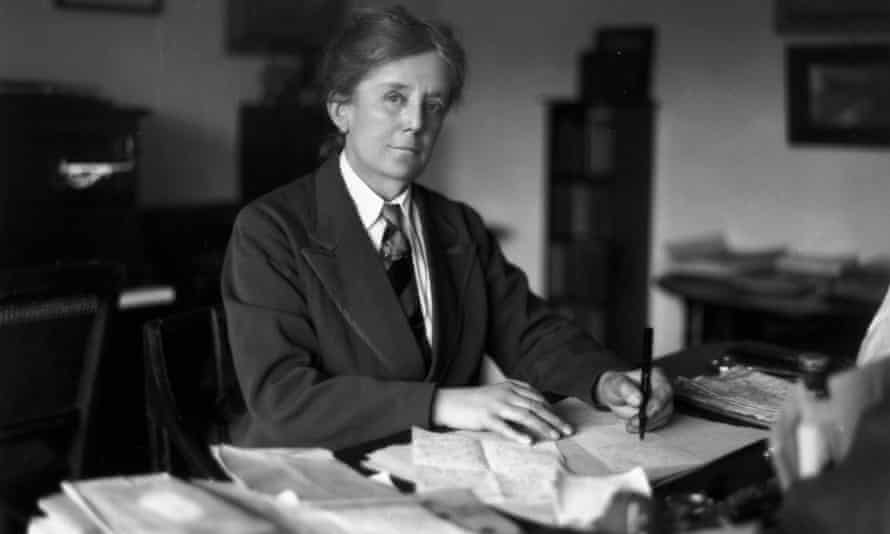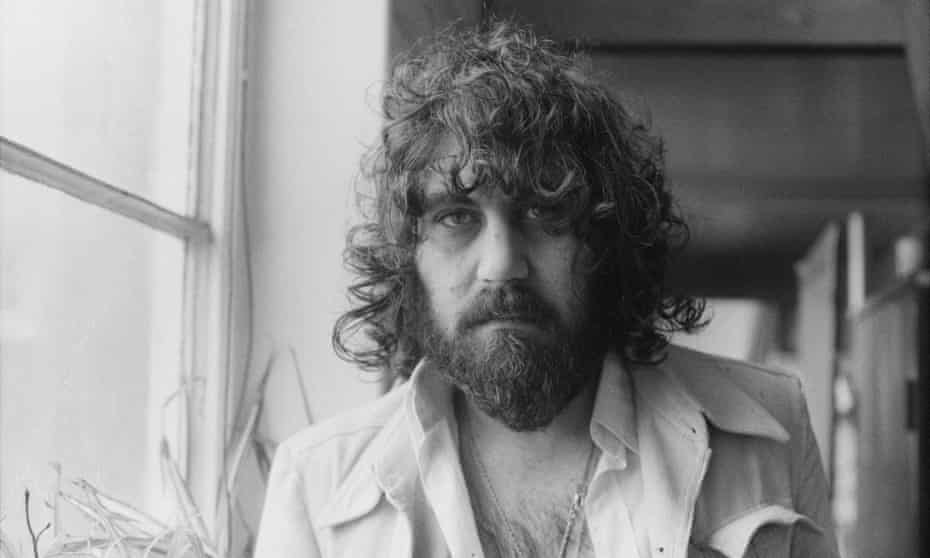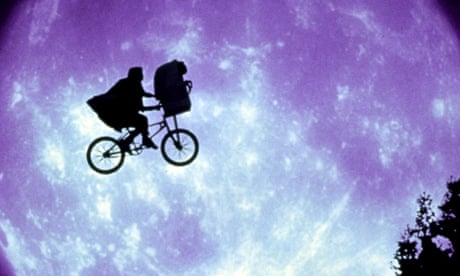'The Sugar Shack,' painting from 'Good Times' and Marvin Gaye cover sells for $15.2M
Saleen Martin, USA TODAY
Wed, May 18, 2022,
Some recognize the painting from "Good Times," the 1970s sitcom about a Black Chicago family. Others who see it think of Marvin Gaye's 14th studio album, "I Want You."
It's "The Sugar Shack," a 1976 painting by former professional football player Ernie Barnes. On May 12, Christie's auction house sold it for $15.2 million – 76 times its high estimate.
The sale set a new record, and it's also the first time Barnes' work made an appearance at the evening sale, the company said on its website.
Hedge fund manager and poker player Bill Perkins bought the piece after more than 10½ minutes of bidding, the company said.
Last November, a similar piece from Barnes, "Ballroom Soul," was sold at Christie’s from the collection of Danny and Donna Arnold for $550,000. That was the record price until Perkins' purchase, a spokeswoman for Christie's said. The estimated going price was $80,000 to $120,000.
The company wanted to make sure this year's estimate was higher than any previous one, but not too high, said Emily Kaplan, co-head of the 20th century evening sale at Christie's New York.
The "Sugar Shack" painting features Black men and women swinging, singing and getting down at a club; it was estimated to sell for $150,000 to $200,000. Kaplan said the auction house had an idea that it would "smash through the estimates," but they guessed it might go for $2 million or $3 million.

Ernie Barnes (1938 - 2009). The Sugar Shack signed ‘ERNIE BARNES’ (lower right); signed again, inscribed and dated 9⁄27/76 Ernie Barnes' (on the reverse). Acrylic on canvas. 36 x 48 in. (91.4 x 121.9 cm.). Painted in 1976.
Other sales from Christie's: Iconic Marilyn Monroe portrait by Andy Warhol sold for $195 million at auction
Diamonds: 'The Rock,' the largest white diamond ever put up for auction, sells for more than $21 million
Kaplan said the company knew it was an "extremely special painting" and they were aware of its inclusion on Marvin Gaye's album and the sitcom. The market for Barnes' pieces has been on an upward trajectory, she said.
The day after Perkins bought "The Sugar Shack," Christie's sold another Ernie Barnes piece called "Storm Dance," a Christie's spokesperson said. It went for $2.34 million but was estimated to sell for $100,000 to 150,000.

"Ballroom Soul" is a piece by Ernie Barnes, painted in 1978. It recently sold at Christie's.
Barnes' paintings have been recognized "in a new light" recently, Kaplan said, noting that there was an exhibition at the California African American Museum that featured "The Sugar Shack" and others.
"It was really part of the cultural consciousness in a way that no other Ernie Barnes painting was," she said. "We certainly didn't know until that moment that it was going to sell at the level that it did. That is extremely rare and very, very special."
The night of the Sugar Shack purchase, Perkins posted about it on Instagram, calling it "a childhood dream come true." He told a social media user on Twitter that he plans to put it in his house.
The auction house has online, day and evening sales, Kaplan said. Day sales and online sales are typically higher volume but lower value, while their highest-value works are typically sold at evening sales.
Marvin Gaye's album and "Good Times" contributed to piece's value of "Sugar Shack."
"It is definitely safe to say that added to the cultural recognition and resonance of this image," she said.
Kaplan said the sale included a diverse set of artists, including Claude Monet. She made an effort to include more female artists and artists of color because for so long, they were overlooked for older, white artists. There was a resistance, she said, to include them in the canon of art history.
"The fact that we included this and it has such a remarkable price was, I think, a real validation. The market is strong for works of art by artists of color. That was really an important thing for me and shining light on incredible and undervalued artists."
Saleen Martin is a reporter on USA TODAY's NOW team. She is from Norfolk, Virginia and loves all things horror, witches, Christmas and food.
Saleen Martin, sdmartin@usatoday.com, Twitter: @Saleen_Martin
This article originally appeared on USA TODAY: 'The Sugar Shack' by Ernie Barnes sold for $15.2M – 76 times its estimate
Saleen Martin, USA TODAY
Wed, May 18, 2022,
Some recognize the painting from "Good Times," the 1970s sitcom about a Black Chicago family. Others who see it think of Marvin Gaye's 14th studio album, "I Want You."
It's "The Sugar Shack," a 1976 painting by former professional football player Ernie Barnes. On May 12, Christie's auction house sold it for $15.2 million – 76 times its high estimate.
The sale set a new record, and it's also the first time Barnes' work made an appearance at the evening sale, the company said on its website.
Hedge fund manager and poker player Bill Perkins bought the piece after more than 10½ minutes of bidding, the company said.
Last November, a similar piece from Barnes, "Ballroom Soul," was sold at Christie’s from the collection of Danny and Donna Arnold for $550,000. That was the record price until Perkins' purchase, a spokeswoman for Christie's said. The estimated going price was $80,000 to $120,000.
The company wanted to make sure this year's estimate was higher than any previous one, but not too high, said Emily Kaplan, co-head of the 20th century evening sale at Christie's New York.
The "Sugar Shack" painting features Black men and women swinging, singing and getting down at a club; it was estimated to sell for $150,000 to $200,000. Kaplan said the auction house had an idea that it would "smash through the estimates," but they guessed it might go for $2 million or $3 million.

Ernie Barnes (1938 - 2009). The Sugar Shack signed ‘ERNIE BARNES’ (lower right); signed again, inscribed and dated 9⁄27/76 Ernie Barnes' (on the reverse). Acrylic on canvas. 36 x 48 in. (91.4 x 121.9 cm.). Painted in 1976.
Other sales from Christie's: Iconic Marilyn Monroe portrait by Andy Warhol sold for $195 million at auction
Diamonds: 'The Rock,' the largest white diamond ever put up for auction, sells for more than $21 million
Kaplan said the company knew it was an "extremely special painting" and they were aware of its inclusion on Marvin Gaye's album and the sitcom. The market for Barnes' pieces has been on an upward trajectory, she said.
The day after Perkins bought "The Sugar Shack," Christie's sold another Ernie Barnes piece called "Storm Dance," a Christie's spokesperson said. It went for $2.34 million but was estimated to sell for $100,000 to 150,000.

"Ballroom Soul" is a piece by Ernie Barnes, painted in 1978. It recently sold at Christie's.
Barnes' paintings have been recognized "in a new light" recently, Kaplan said, noting that there was an exhibition at the California African American Museum that featured "The Sugar Shack" and others.
"It was really part of the cultural consciousness in a way that no other Ernie Barnes painting was," she said. "We certainly didn't know until that moment that it was going to sell at the level that it did. That is extremely rare and very, very special."
The night of the Sugar Shack purchase, Perkins posted about it on Instagram, calling it "a childhood dream come true." He told a social media user on Twitter that he plans to put it in his house.
The auction house has online, day and evening sales, Kaplan said. Day sales and online sales are typically higher volume but lower value, while their highest-value works are typically sold at evening sales.
Marvin Gaye's album and "Good Times" contributed to piece's value of "Sugar Shack."
"It is definitely safe to say that added to the cultural recognition and resonance of this image," she said.
Kaplan said the sale included a diverse set of artists, including Claude Monet. She made an effort to include more female artists and artists of color because for so long, they were overlooked for older, white artists. There was a resistance, she said, to include them in the canon of art history.
"The fact that we included this and it has such a remarkable price was, I think, a real validation. The market is strong for works of art by artists of color. That was really an important thing for me and shining light on incredible and undervalued artists."
Saleen Martin is a reporter on USA TODAY's NOW team. She is from Norfolk, Virginia and loves all things horror, witches, Christmas and food.
Saleen Martin, sdmartin@usatoday.com, Twitter: @Saleen_Martin
This article originally appeared on USA TODAY: 'The Sugar Shack' by Ernie Barnes sold for $15.2M – 76 times its estimate
Clyde McPhatter
Josh Shaffer
Thu, May 19, 2022
Sometime in the early 1950s, a teenage boy snuck into a segregated dance at the Durham Armory, hoping to get a glimpse of a crooning Clyde McPhatter and his doo-wop Dominos.
He later described the scene he saw on the dance floor, so bold for the era it seemed sinful, but not so audacious he didn’t move along.
“What I observed was the no inhibition, no self-consciousness or rigidity, just fluid movement while the music punctuated every bump and grind,” said the young Ernie Barnes, according to a 2018 story in The News & Observer. “I stood among the dancing with my mouth dropped.”
The scene that burned into the teenager’s mind that day would become “The Sugar Shack,” a 1976 painting known for its appearance first on a Marvin Gaye album and then accompanying the closing credits to the 1970s TV show, “Good Times.”
And it just sold at auction in New York for $15.3 million.
The whopping price tag, a record for Barnes’ work, not only brings new attention to a masterpiece conceived in Durham, it highlights the collection and worldview from a late, local hero gone worldwide.
“He would have said that it’s underpriced,” said Luz Rodriguez, his longtime personal assistant and trustee of his estate. “He would have given his trademark, ‘Bless his heart.’”

Artist Ernie Barnes in 2001.
Still, Rodriguez told The N&O, the painting has landed in the right home.
Bill Perkins, the Texas energy trader who bought it, told The New York Times he worried Oprah Winfrey would show up and outbid him for it, and that he considered the eight-figure price a steal.
“You never saw paintings of Black people by Black artists,” he told The Times. “This introduced not just me, but all of America, to Barnes’ work. It’s the only artwork that has ever done that. And these were firsts. So this is never going to happen again. Ever. The cultural importance of this piece is just crazy.”
‘An honor’
The sale turns fresh eyes to Barnes, who died at 70 in 2009, but also to Durham, where he grew up in a neighborhood called The Bottoms — son of a shipping clerk for Liggett Myers tobacco.
Three years ago, the N.C. Museum of History showed a collection of his work for its African-American Celebration, featuring the same dancers and marching bands that moved with almost liquid nonchalance.
That it showed in the state’s history museum, rather than one dedicated to art, demonstrates its impact.
“We thought it was so wonderful that Ernie and his art are getting the recognition they deserve,” said Katie Edwards, the history museum’s curator of popular culture. “It was an honor to be able to display such an iconic painting like ‘The Sugar Shack.’”
But even though Barnes carried a sketchbook as a child, it was football, not art, that pulled him out of the Bottoms.

Ernie Barnes with paintings on movie set “Number One” starring Charlton Heston in 1969.
Always big for his age, he played for Hillside High School, excelling enough to earn a scholarship to what is now called N.C. Central University in Durham, turning down many other offers.
Then in 1959, the artistic kid from Durham got drafted into the pros as a lineman, playing for the New York Titans, Baltimore Colts, San Diego Chargers and Denver Broncos. Even on the sidelines, sketching his opponents, teammates called him “Big Rembrandt.”
In all his paintings, especially whether the figures are dancing or crashing into each other on the football field, their eyes are closed.

“Friendly Friendship Baptist Church,” by Ernie Barnes, 1994, will be included in “The North Carolina Roots of Artist Ernie Barnes” exhibition at the North Carolina Museum of History, which opens June 29 and runs through March 3.
Zacki Murphy, Barnes’ friend and a Hillsborough native, wrote in the N&O in 2018 that Barnes was disturbed about the violence on the field, even as a player, and he sought to elevate the players in his art.
On their eyes being closed, “It represents our blindness to another’s humanity,” he said, according to Murphy’s story. “We don’t see into the depths of our interconnection; the gifts, the strength and potential within other human beings. Racism has taught many of us ‘what’ to think about each other, but not ‘how’ to think about one another.”
“Hallelujah,” Murphy said Thursday, responding to news of the sale. “About time. To me, he’s still alive.”
How ‘The Sugar Shack’ went worldwide
“The Sugar Shack,” painted long after Barnes left football, caught Gaye’s attention after the two played pickup basketball in Los Angeles, Rodriguez said. The soul star borrowed it, and the next thing Barnes knew, Motown records wanted it for the cover of the 1976 album, “I Want You.”
Around the same time, Norman Lear approached Barnes about using the same image for “Good Times,” featuring a Black family struggling on the south side of Chicago, including eldest son J.J. Evans, an aspiring painter.
But Gaye never returned the original “Sugar Shack,” so Barnes produced a second with only slight differences — the main one being removing a fifth banner that spelled out the album’s title “I Want You.” Years later, Eddie Murphy bought the first.
Widely acclaimed before his death in 2009, Barnes’ art so often featured athletes and dancers moving with almost liquid ease, whether they were drum majors or basketball players reaching for a rebound.
But “Sugar Shack” — which the Times reported may go on public display before gracing its new owner’s home — is as burned on the nation’s conscience as the dancers that first inspired a young boy to move his feet.
“I can’t tell you how many stories I’ve gotten from people about seeing ‘Sugar Shack,’” Rodriguez said. “People tell me it comforts them. They swear some of the characters in there are their cousins. But it’s always positive. It’s always inspiring.”

“The Drum Major” by Ernie Barnes, 2003, will be included in “The North Carolina Roots of Artist Ernie Barnes” exhibition at the North Carolina Museum of History, which opens June 29 and runs through March 3.
